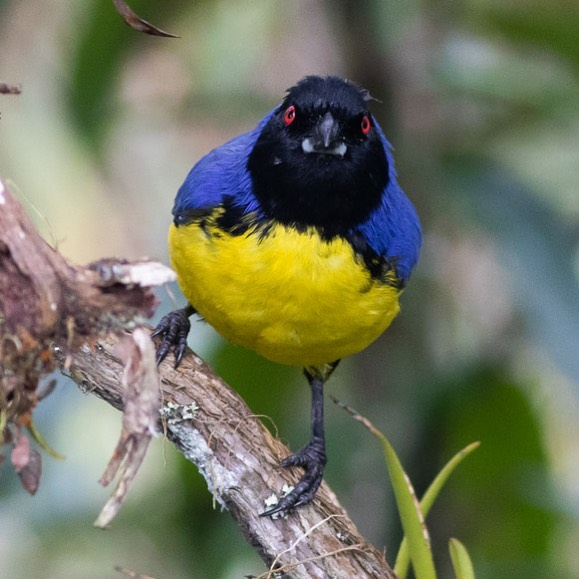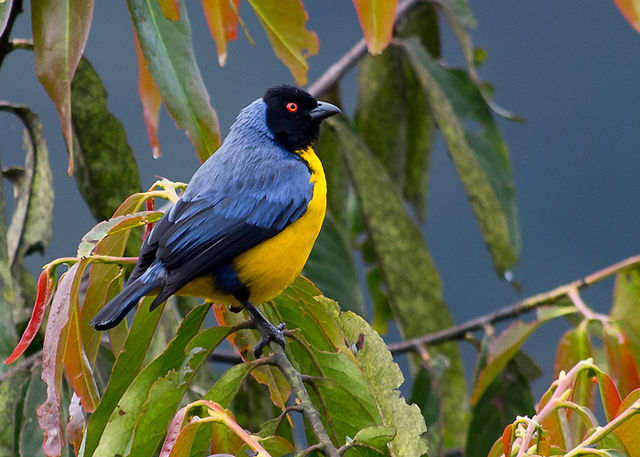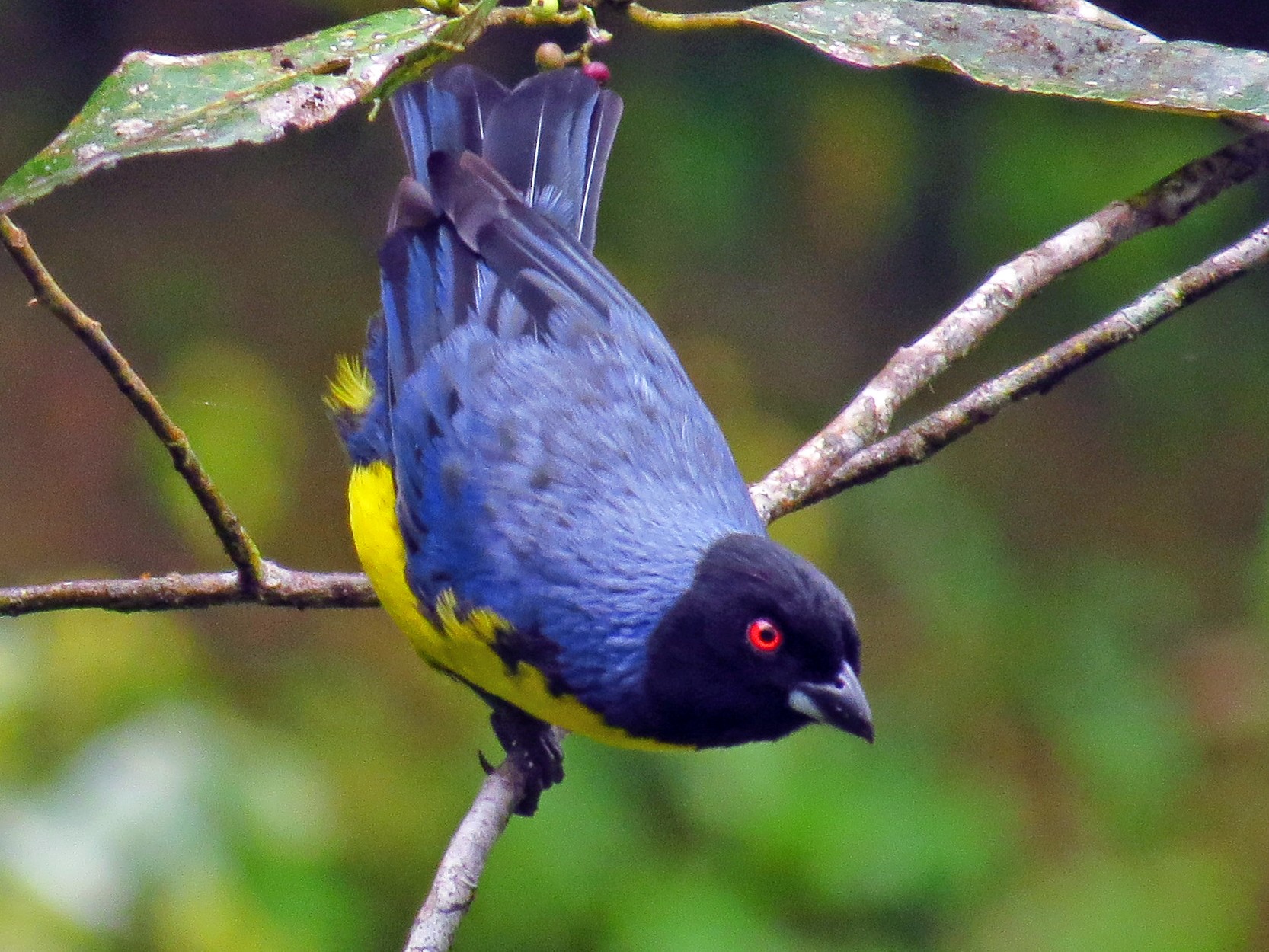Its bright lemon-colored bib and belly stand out even more in contrast to its black head with iɾidescent blue back and piercing red eyes.
Meet the Hooded Mountain Tanager

The Hooded Mountain Tanager (Buthrɑupis montana) has a bright iridescent blue upperpart and a lemon-yellow breast and belly. The impressive appearance of this bird is topped off with a black hood and a throat with piercing red eyes. At 23 centimeters (9.1 in) and 85 grams (3.0 oz), it is one of the largest tanagers (second only in weight to the white-headed tanager).

Birds in the southern part of their range have a light blue stripe on the nape of the neck.
They are easily distinguished from the black-breasted mountain tanager (Buthraupis exima) by their blue, rather than green, back and bright red eyes.

This is located in the forested area of the Andean highlands of Bolιvia, Cölömbιa, Ecuador, Peru and Venezuela.
They are most common in the humid montane forests of the eastern slopes of the Andes at elevations ranging between 2200 and 3500 m.
Although there is not much information about the breeding habits of this bird, it appears that they breed from October to January. Similar species have a clutch size of 3 to 5 eggs and females incubate the eggs alone for 10 to 13 days. The chicks of these species fledge between 8 and 11 days after hatching.

The hooded mountain tanager likes to dine on artɾopods, insects, and spiders, but it has also been seen eating berries.
This bird vocalizes moderately throughout the year, but sings while circling over the canopy at dusk and has been considered of Least Concern on the IUCN Red List.





